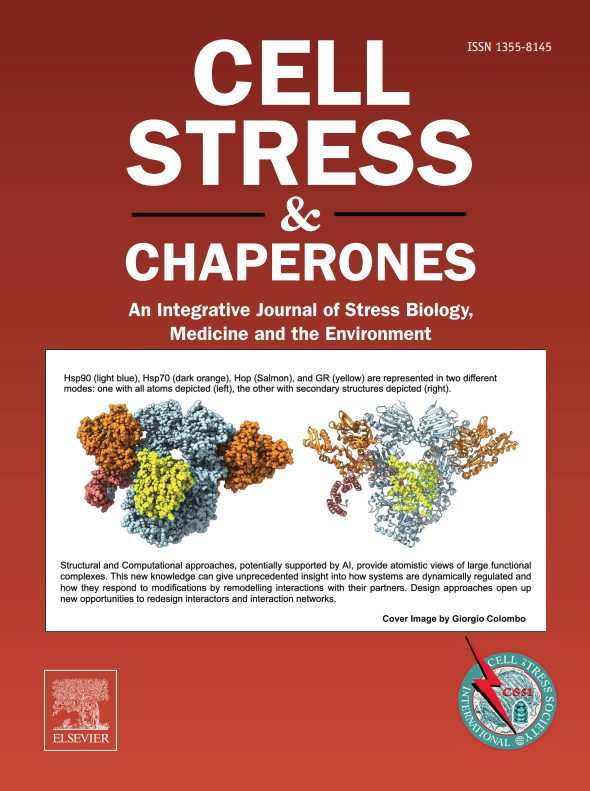热休克通过动态DNA甲基化和染色质环诱导选择性聚腺苷化。
IF 3.2
3区 生物学
Q3 CELL BIOLOGY
引用次数: 0
摘要
选择性切割和聚腺苷酸化(APA)是一种基因调控机制,在应激条件下细胞使用该机制来上调促蛋白酶转录物,但细胞如何实现这一目标仍然知之甚少。此前,我们阐明了DNA甲基化调控的APA机制,其中基因体DNA甲基化通过阻断CTCF结合和APA控制区染色质环的形成来增强远端poly(a)异构体的表达。我们假设DNA甲基化调控的APA是细胞诱导促进蛋白稳定的聚(A)亚型的一种机制。在DNAJB6共伴侣位点,急性热休克导致应激反应转录因子HSF1、ATF6和YY1在APA控制区结合,并增加了已知可阻止蛋白质聚集的近端聚(A)异构体的表达。此外,TET1被招募来快速去甲基化DNA,促进CTCF结合和染色质环的形成,从而加强近端聚(A)异构体的优先表达。随着细胞恢复,转录因子清空APA控制区,DNMT1被招募到该区域进行再甲基化。这个过程解决了染色质环并重置了poly(A)异构体表达模式。我们的发现揭示了一种表观遗传机制,使细胞能够动态调节poly(A)亚型以响应应激,同时揭示了DNA甲基化,转录因子结合和染色质环之间的相互作用。本文章由计算机程序翻译,如有差异,请以英文原文为准。
Heat shock induces alternative polyadenylation through dynamic DNA methylation and chromatin looping
Alternative cleavage and polyadenylation (APA) is a gene regulatory mechanism used by cells under stress to upregulate proteostasis-promoting transcripts, but how cells achieve this remains poorly understood. Previously, we elucidated a DNA methylation-regulated APA mechanism, in which gene body DNA methylation enhances distal poly(A) isoform expression by blocking CCCTC-binding factor (CTCF) binding and chromatin loop formation at APA control regions. We hypothesized that DNA methylation-regulated APA is one mechanism cells employ to induce proteostasis-promoting poly(A) isoforms. At the DNAJB6 cochaperone locus, acute heat shock resulted in binding of stress response transcription factors heat shock factor 1, ATF6, and YY1 at the APA control region and an increase in the expression of the proximal poly(A) isoform known to prevent protein aggregation. Furthermore, TET1 was recruited to rapidly demethylate DNA, facilitating CTCF binding and chromatin loop formation, thereby reinforcing preferential proximal poly(A) isoform expression. As cells recovered, the transcription factors vacated the APA control region, and DNMT1 was recruited to remethylate the region. This process resolved chromatin looping and reset the poly(A) isoform expression pattern. Our findings unveil an epigenetic mechanism enabling cells to dynamically modulate poly(A) isoforms in response to stress while shedding light on the interplay between DNA methylation, transcription factor binding, and chromatin looping.
求助全文
通过发布文献求助,成功后即可免费获取论文全文。
去求助
来源期刊

Cell Stress & Chaperones
生物-细胞生物学
CiteScore
7.60
自引率
2.60%
发文量
59
审稿时长
6-12 weeks
期刊介绍:
Cell Stress and Chaperones is an integrative journal that bridges the gap between laboratory model systems and natural populations. The journal captures the eclectic spirit of the cellular stress response field in a single, concentrated source of current information. Major emphasis is placed on the effects of climate change on individual species in the natural environment and their capacity to adapt. This emphasis expands our focus on stress biology and medicine by linking climate change effects to research on cellular stress responses of animals, micro-organisms and plants.
 求助内容:
求助内容: 应助结果提醒方式:
应助结果提醒方式:


